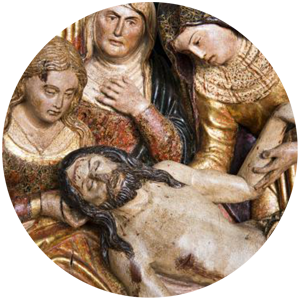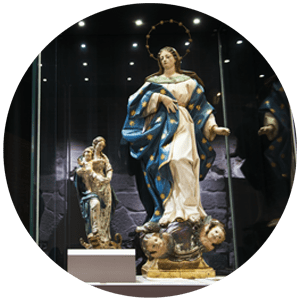This upper gallery leaves at sight the middle of 16th century façade structure, which belonged to the renaissance palace reform ordered by Archbishop Hernando of Aragon. Moving forward, we can see the upper zone of the Gothic façade of Dalmau de Mur’s chapel, discovered at the building restoration after being hidden inside the walls since the 16th century.
Selection of works shown in this gallery allows us to understand religiosity and aesthetic development among the 16th and 18th centuries, by some artists’ hands of that moment. From renaissance serenity and balance captured in Damián Forment’s and his disciple Gabriel Yolí’s sculptures, until getting more drama and movement in Baroque style. We see some examples of it in the group of “Baby Jesus”. Following the model created by Martínez Montañés towards 1600, they reflect the interest of that time to reforce the human reality of God, grabbing the essence of the childhood world embedded in Baby Jesus.


